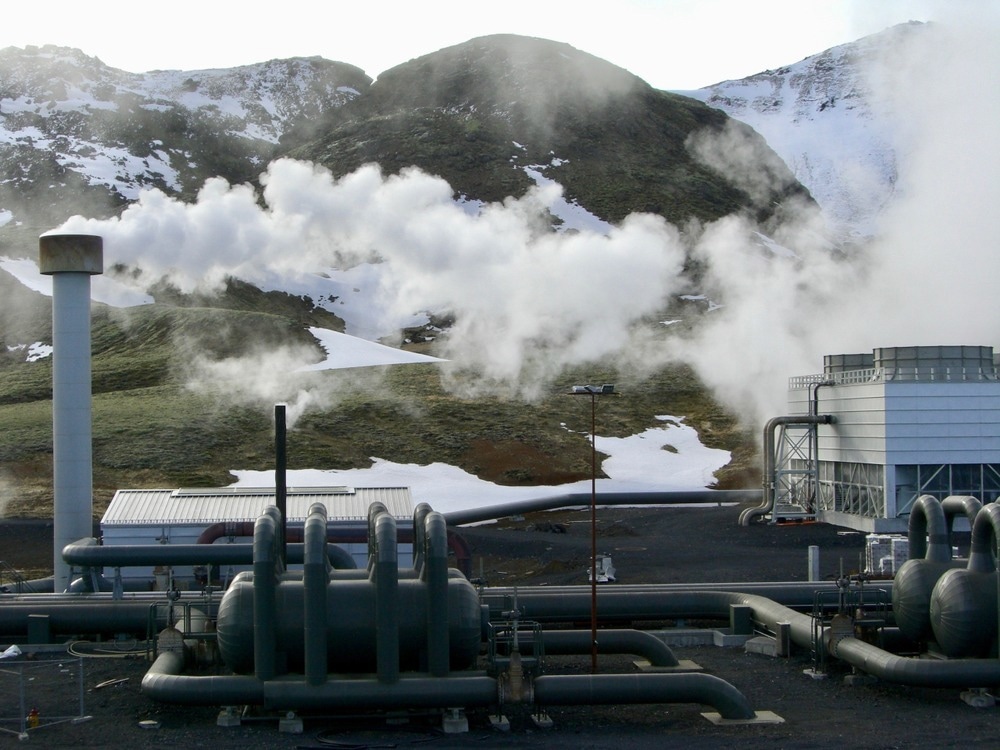A major breakthrough in hydrogen power that could open up a whole new world of possibilities was recently announced by a European consortium after successfully testing a gas turbine capable of running on pure hydrogen.

Image Credit: Glenmore/Shutterstock.com
According to a recent announcement, a converted Siemens SGT-400 turbine from the HYFLEXPOWER project can produce electricity using hydrogen, natural gas, or any combination of the two fuels. In 2022, HYFLEXPOWER successfully tested the converted turbine with 30% hydrogen and 70% natural gas. In October 2023, the project announced it had successfully tested the turbine with 100% hydrogen.
“Our SGT-400 turbine, when fully operating on 100% green hydrogen, will save the planet from up to 65,000 tons of CO2 emissions,” Ertan Yilmaz, HYFLEXPOWER coordinator, said in a press release.
Switching to renewable energy is one of the most effective ways to reduce carbon emissions. However, electricity generation from wind, solar, and other sources are at the mercy of natural supply. Hydrogen as a fuel source can directly address this problem of availability, as hydrogen can be extracted from one of the most plentiful resources on Earth: water. When there is excess wind or solar energy production, it can be used to perform electrolysis and extract hydrogen from water. The resulting hydrogen fuel can be stored and used to fuel gas turbines when there is a dip in wind or solar energy.
Before this sophisticated clean energy solution can be applied, several key challenges for operating hydrogen turbines need to be addressed. First, hydrogen flame propagation velocity is up to seven times quicker than natural gas. This results in highly unstable combustion and pressure fluctuations that can place a significant amount of stress on a combustor. Second, hydrogen combustion produces much higher temperatures than natural gas combustion. This results in a much higher production of nitrogen oxides, air pollutants that can cause health issues.
The HYFLEXPOWER project is dedicated to addressing these and other issues related to the adoption of hydrogen gas turbines. Financially backed by the European Union's Horizon 2020 program, the project has successfully tested its industrial-scale hydrogen power plant at the Saillat-sur-Vienne paper packaging plant in France.
While HYFLEXPOWER did not disclose details on how it could address critical challenges associated with converting a natural gas turbine into a hydrogen turbine, a similar project from Kawasaki Heavy Industries did reveal some key measures, according to an article published by Nature Portfolio. First, the KHI turbine introduces water or steam into the combustor to better control hydrogen combustion. Second, the turbine used a novel combustor design with tiny injection holes that produced small hydrogen flames that were stable and clean burning. This also helped to reduce nitrogen oxide production.
The Promises and Challenges of Hydrogen Gast Turbine Adoption
It would likely be easily adopted if a company or large consortium could commercialize hydrogen gas turbine conversion technology. Gas turbines are already broadly used for electricity production because they can generate a large amount of electricity in a small space. They also start up quickly and can be easily integrated with other power systems. One of the key differentiators for various gas turbines is the fuel that they burn. Natural gas is one of the most popular fuels for gas turbines, but the carbon emissions and availability of natural gas are growing concerns. Hydrogen not only addresses these two concerns, but it also has a higher energy content per mass compared to fossil fuels.
That being said, there are many different ways to produce hydrogen, and some of them involve the consumption of fossil fuels, particularly a process known as fossil fuel reforming. Typically done by combining methane and steam under high pressure, fossil fuel reforming makes up the highest share of current hydrogen production.
Sustainability advocates have been calling for greater adoption of so-called “green hydrogen,” produced through renewable energy. While this can involve using biomass fuels, it more typically involves using wind or solar power to perform electrolysis. Because these energy sources can be unreliable, combining them can make a hydrogen power plant more dependable. This can result in significant upfront investments, but some research has shown that these investments eventually produce a significant return.
One study found that a hydrogen power plant using solar-powered electrolysis produced a profit of 25% of the overall upfront cost, with a payback period of 13-15 years.
While a gas turbine capable of using 100% hydrogen holds significant promise, other research efforts have taken a more stepwise approach to incorporating hydrogen. For example, one study found that adding just 10% hydrogen to the fuel mix for a natural gas turbine decreased methane and nitric oxide emissions by 60% and 14%, respectively.
Read More: The Role of Nuclear Power in Green Hydrogen Production
References and Further Reading
Ebaid, M., Hammad, M., Alghamdi, T. (2015, September 28). Thermoeconomic Analysis of a PV and Hydrogen Gas Turbine Hybrid Power Plant. International Journal of Hydrogen Energy. https://www.sciencedirect.com/science/article/abs/pii/S0360319915018509
HyFlexPower. (2023, October 24). First successful demonstration with 100% green H2. [Online] Available at: https://www.powerengineeringint.com/world-regions/europe/world-first-gas-turbine-successfully-operates-with-100-green-hydrogen/
Kawasaki Heavy Industry. (2022). Hydrogen gas turbine offers promise of clean electricity. Nature Portfolio, 604(7898), 42473-42475. https://doi.org/10.1038/d42473-022-00211-0
Nazari, M. A., Alavi, M. F., Salem, M., & Assad, M. E. H. (2022). Utilization of hydrogen in gas turbines: a comprehensive review. International Journal of Low-Carbon Technologies, 17(4), 513-519. https://academic.oup.com/ijlct/article/doi/10.1093/ijlct/ctac025/6551709
Disclaimer: The views expressed here are those of the author expressed in their private capacity and do not necessarily represent the views of AZoM.com Limited T/A AZoNetwork the owner and operator of this website. This disclaimer forms part of the Terms and conditions of use of this website.